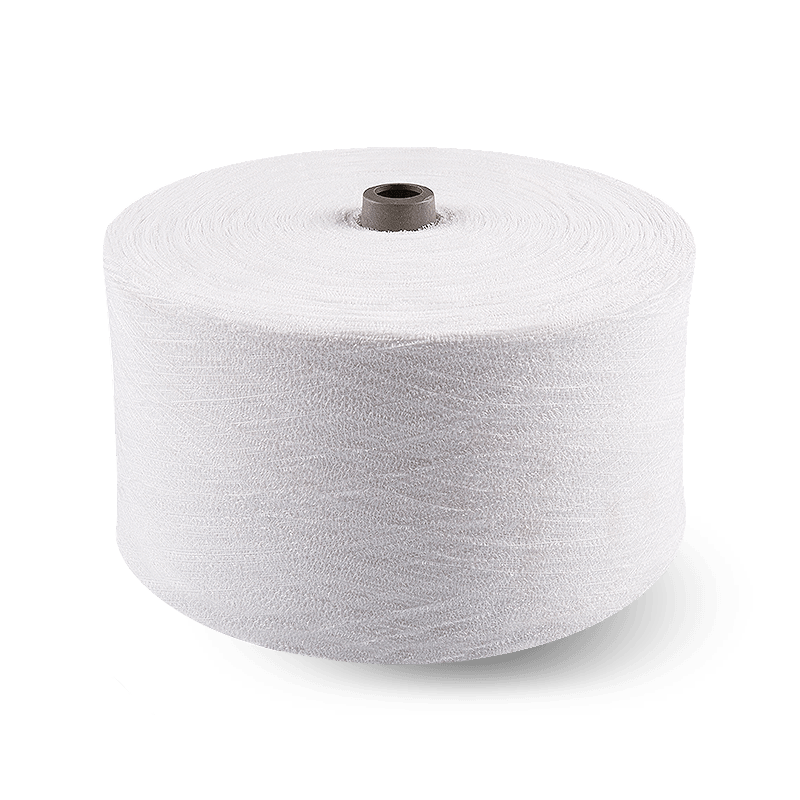In the textile manufacturing industry, yarn dyeing technology directly affects the quality, appearance and market competitiveness of the final product. Although the traditional dyeing method is mature, it has certain limitations in terms of environmental protection, color fastness and production cost. In recent years, doped dyed yarn (Doped Dyed Yarn) has gradually been favored by the textile industry due to its unique advantages.
1. Definition and manufacturing process of doped dyed yarn
1.1 What is doped dyed yarn?
Doped dyed yarn refers to the process of adding dyes or pigments directly to the spinning solution during the spinning process, so that the fiber is dyed during the forming process, rather than the traditional post-dyeing process. This method allows the color molecules to be closely combined with the fiber material, thereby obtaining a more uniform and longer-lasting dyeing effect.
1.2 Manufacturing process of doped dyed yarn
Raw material pretreatment: Mix the polymer (such as polyester, nylon, acrylic, etc.) with the dye or pigment to ensure uniform dispersion.
Melt spinning: The mixed raw materials are heated to a molten state and extruded through a spinneret to form fibers.
Stretching and shaping: The fiber is stretched to enhance its strength and heat treated to stabilize its color.
Winding into yarn: The final result is a uniformly dyed yarn that can be used directly for weaving or knitting.
Compared with traditional dyeing processes, doping dyeing reduces the consumption of water, chemicals and energy, which is in line with the sustainable development trend of the modern textile industry.

2. Advantages of doped dyed yarn in textile manufacturing
2.1 Excellent color fastness
Traditional dyed yarns are prone to fading during subsequent processing (such as washing, friction, and light), while doped dyed yarns show higher color fastness due to the close combination of dye molecules and fibers:
Washing color fastness: Even after multiple washings, the color can still remain bright.
Light color fastness: It is not easy to fade under ultraviolet light and is suitable for outdoor textiles.
Friction color fastness: Reduce color shedding caused by friction and improve product durability.
2.2 Environmental protection and sustainable development
Traditional dyeing processes consume a lot of water resources and produce chemical wastewater, while doped dyed yarns have significant environmental advantages:
Reduce water pollution: no need for large amounts of water washing, reducing wastewater discharge.
Reduce energy consumption: save energy by eliminating the high-temperature washing and drying steps in traditional dyeing.
Comply with environmental regulations: meet the increasingly stringent environmental standards of the textile industry around the world (such as OEKO-TEX®, REACH).
2.3 Improve production efficiency
Traditional dyeing requires additional dyeing, color fixing, washing and other processes, while doped dyed yarns can be used directly for weaving, greatly shortening the production cycle:
Reduce processes: eliminate the dyeing link and improve supply chain efficiency.
Reduce defective rate: better color uniformity and reduce waste caused by uneven dyeing.
Adapt to fast fashion needs: shorten delivery time and meet the rapidly changing needs of the market.
2.4 Broad application prospects
Doped dyed yarns are suitable for a variety of textile products, including:
Clothing: sportswear, underwear, outdoor clothing, etc., requiring high color fastness and comfort.
Home textiles: curtains, sofa fabrics, bedding, etc., require light resistance and washability.
Industrial textiles: automotive interiors, safety protective clothing, etc., require high durability and environmental protection.
3. Future development trend of doped dyed yarns
As consumers' demand for environmentally friendly and high-quality textiles grows, the market prospects of doped dyed yarns are broad:
Intelligent dyeing technology: Combined with nanotechnology, develop yarns with antibacterial and anti-ultraviolet functions.
Application of bio-based dyes: Use natural dyes to further improve environmental performance.
Customized production: A flexible production mode of small batches and multiple varieties is achieved through digital technology.
Conclusion
Double-dyed yarns are becoming an important development direction of the textile manufacturing industry with their excellent color fastness, environmental protection, production efficiency and application flexibility. With the advancement of technology and the promotion of market demand, doped dyed yarns will play a greater role in the fields of high-end textiles, sustainable fashion and functional textiles in the future, and promote the entire industry to develop in a more efficient and environmentally friendly direction.